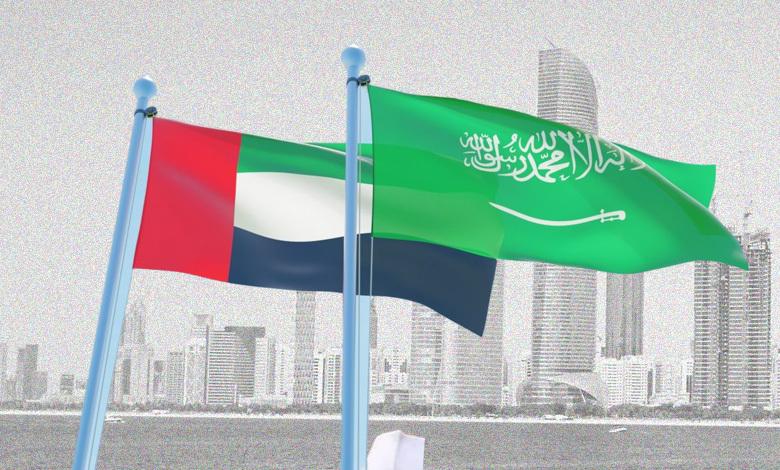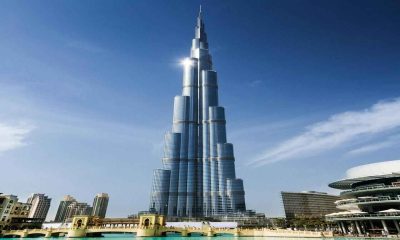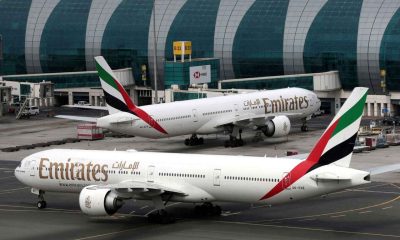Tourism plays a pivotal role in shaping the economies of countries around the world, offering not only economic benefits but also cultural exchanges and international cooperation. In 2023, two prominent Middle Eastern nations, the United Arab Emirates (UAE) and Saudi Arabia, emerged as key players in the global tourism industry, securing their spots among the world’s top 10 destinations for tourism growth.
The analysis of foreign visitor arrivals by destination nation in 2023—which included forward bookings for the fourth quarter—showed how the tourism industry throughout the world was still recovering from the pandemic.
The top 10 global performers included a notably strong representation from the Middle East and Africa.
According to the ForwardKeys Global Travel Trends report, Saudi Arabia ranked fifth in the world for international arrivals in 2023, reaching pre-Covid levels for incoming tourists and supported by Hajj travellers, tourism industry investments, and economic diversification initiatives.
The kingdom came in after “sun and beach” destinations like the Dominican Republic, Greece, Colombia, and Mexico in the top five.
The UAE came in at number eight on the list, with visitor arrivals this year barely 7% below pre-Covid levels. This is largely due to a surge in visitors from the US and Russia as well as good air connectivity, which has helped attract more Chinese visitors in particular.
Egypt is currently the tenth most popular tourist destination in the world. Estimated foreign arrivals in 2023 will be 10% lower than pre-pandemic levels, in part due to the return of Russian tourists and the country’s renaissance as a must-see historical destination.
At a press conference held on Friday during the global summit of the World Travel and Tourism Council in Rwanda, Olivier Ponti, vice president of insights at ForwardKeys, stated that data on foreign visitor arrivals worldwide revealed “significant differences” between regions.
He claimed that only two regions in the world—Africa and the Middle East—were moving from recovery to growth in the fourth quarter.
International visitor arrivals in the area are expected to increase by 2% in the upcoming quarter, despite being 14% below pre-pandemic levels thus far this year, according to the report.
Towards the end of the year, there will be an acceleration of the global recovery in tourist arrivals.
Globally, inbound tourism is currently 27% behind 2019 levels; however, the recovery is expected to quicken in the fourth quarter, with pre-Covid levels falling to 13% below them.
According to the data, outbound travellers from the US and Canada who are visiting other countries are driving the global travel recovery.
The steps taken by these countries to enhance their tourism sectors, and the outlook for the industry in the region.
1. Diverse Attractions and Investment
The UAE and Saudi Arabia boast a diverse range of attractions that appeal to a broad spectrum of tourists. In the UAE, iconic destinations like Dubai and Abu Dhabi have become synonymous with luxury and opulence. Visitors can explore world-renowned landmarks such as the Burj Khalifa, Palm Jumeirah, and the Louvre Abu Dhabi. Additionally, the UAE’s investment in cultural and entertainment events, such as Expo 2020 Dubai, has drawn a global audience.
Saudi Arabia, on the other hand, has opened its doors to international travelers with an array of historical, cultural, and natural wonders. Tourists can now visit sites like Al-Ula, home to the ancient Nabatean city of Madain Saleh, and enjoy the natural beauty of the Red Sea coastline. The government’s efforts to showcase the country’s rich heritage, including the UNESCO-listed Diriyah historical district, have made Saudi Arabia an enticing destination for cultural exploration.
2. Visa Reforms and Accessibility
Both the UAE and Saudi Arabia have implemented significant visa reforms in recent years, making it easier for travelers to explore their offerings. The UAE introduced a 5-year multi-entry tourist visa, making it more convenient for frequent visitors to the country. In Saudi Arabia, the introduction of electronic visas and the launch of the Saudi Green Card program have simplified the entry process for tourists and expatriates alike.
These initiatives are essential for attracting a diverse range of visitors, from short-term tourists to long-stay travelers, and have the potential to stimulate the tourism industry significantly. The greater accessibility is expected to boost tourist arrivals, benefiting both countries’ economies.
3. Promotion of Cultural Tourism
Cultural tourism has become a focal point for both the UAE and Saudi Arabia. In the UAE, the opening of the Louvre Abu Dhabi and the upcoming Guggenheim Museum in Saadiyat Island signals the country’s dedication to cultural enrichment. Such institutions not only draw art enthusiasts but also serve as educational landmarks for a broader audience.
In Saudi Arabia, the cultural renaissance is embodied by the AlUla project, a comprehensive initiative aimed at preserving and promoting the heritage of the region. Visitors can explore ancient rock formations, visit archaeological sites, and immerse themselves in the rich history of Saudi Arabia. These efforts have not only enhanced the cultural experience for tourists but also supported local communities and economies.
4. Sustainable Tourism Initiatives
Both countries have committed to sustainable tourism practices. The UAE’s “Green Visa” initiative offers long-term residencies to highly skilled professionals in fields such as technology, research, and medicine. This program aims to attract experts who can contribute to the country’s knowledge-based economy and sustainable development.
Saudi Arabia, too, is prioritizing sustainability in its tourism initiatives. The country’s “Saudi Green” and “Red Sea” projects are focused on preserving the environment, promoting responsible tourism, and ensuring that tourism development aligns with ecological conservation.
5. Economic Diversification
The growth of the tourism sector is part of a broader strategy for economic diversification in both countries. Saudi Arabia’s Vision 2030 and the UAE’s economic diversification efforts have tourism as a central pillar. By reducing dependence on oil revenue and investing in sectors such as tourism, both nations aim to create sustainable economic models.
Outlook for the Future of Saudi and UAE
According to Mr. Ponti, Middle Eastern travel destinations have a “key role to play” in influencing how foreign tourists view the region and the geopolitical subtleties that exist within it.
It ought to be evident that there isn’t a one-size-fits-all approach to the region. There are various nations in various circumstances, and the danger is that the farther you are from a place, the more probable it is that you will combine this with the idea that “this is the Middle East, there’s a war there, so I’m not going,” he stated.
He claimed that despite the conflict between Israel and Gaza, Middle Eastern travel destinations “have some good cards in hand” in terms of robust air connections and a wide range of tourism options.
According to Mr. Ponti, Saudi Arabia is making “massive” investments in the tourism sector, which will increase the country’s and the region’s visibility. Meanwhile, Dubai has established itself as a leisure destination.
He stated, “I don’t see why 2024 would not be a successful year if the conflict in Israel doesn’t spill over. There is a lot of energy and a lot of efforts that are going to pay off.”
The UAE and Saudi Arabia’s emergence as top destinations for tourism growth in 2023 signifies the success of their efforts to diversify their economies, expand their cultural offerings, and attract a global audience. As both countries continue to invest in infrastructure, accessibility, and sustainable practices, they will likely maintain their positions among the world’s leading tourist destinations in the years to come.
Moreover, the dynamic tourism industry in the Middle East presents a significant opportunity for collaboration and mutual support between the UAE and Saudi Arabia. By sharing best practices and aligning their strategies, these neighboring nations can enhance the region’s position as a tourism hotspot.
In conclusion, the UAE and Saudi Arabia’s presence in the top 10 destinations for tourism growth in 2023 underscores their commitment to developing their tourism sectors. With an array of attractions, improved accessibility, and a focus on cultural enrichment and sustainability, these countries are poised for further growth in the global tourism industry, strengthening their positions as must-visit destinations.
Read More: Qatar Welcomes GCC 3X3 Basketball Championship After a 7-Year Hiatus






















